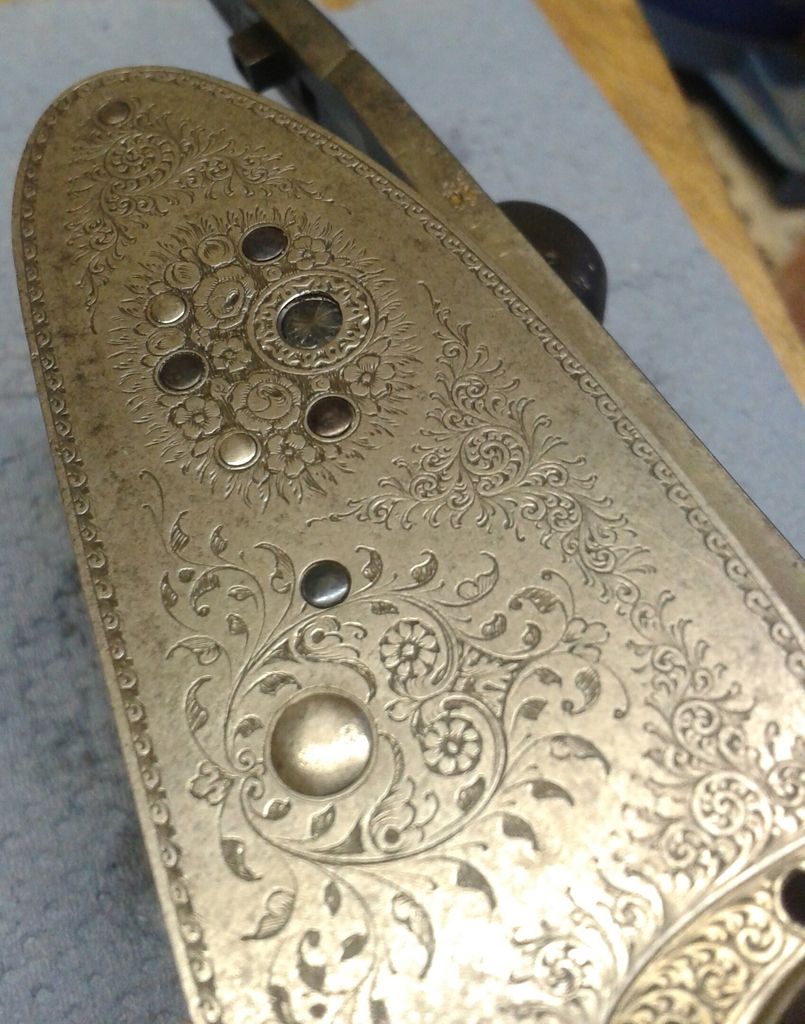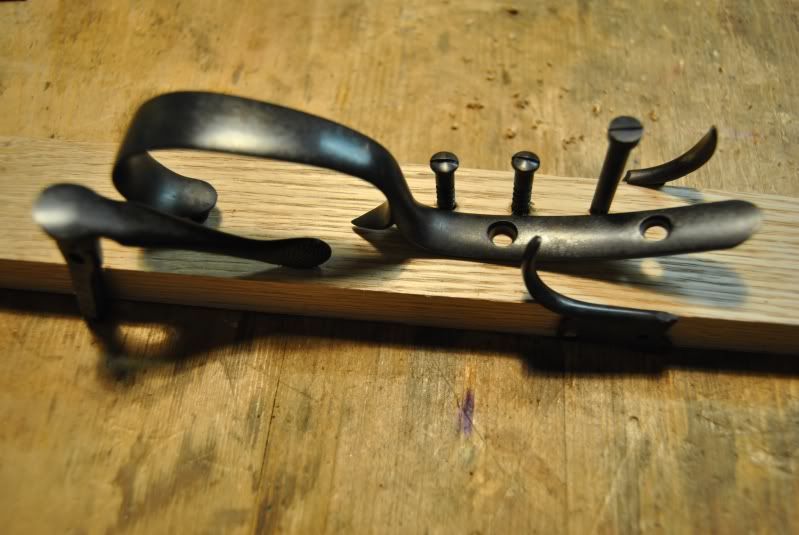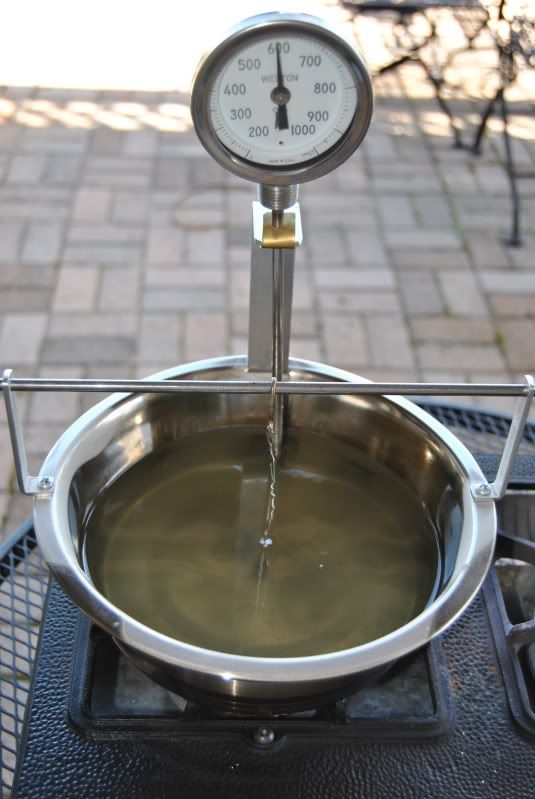|
S |
M |
T |
W |
T |
F |
S |
|
|
|
|
|
|
|
1
|
|
2
|
3
|
4
|
5
|
6
|
7
|
8
|
|
9
|
10
|
11
|
12
|
13
|
14
|
15
|
|
16
|
17
|
18
|
19
|
20
|
21
|
22
|
|
23
|
24
|
25
|
26
|
27
|
28
|
29
|
|
30
|
|
|
|
|
|
|
|
|
3 members (shrapnel, meprof57, 1 invisible),
1,230
guests, and
5
robots. |
|
Key:
Admin,
Global Mod,
Mod
|
|
|
Forums10
Topics39,634
Posts563,609
Members14,602
| |
Most Online9,918
Jul 28th, 2025
|
|
|
|
Joined: Mar 2012
Posts: 617
Sidelock
|
OP

Sidelock
Joined: Mar 2012
Posts: 617 |
I've never tried it before but took the plunge last week. Had a nice sidelock action to tidy up and thought I'd have a go at the screws and pins.
I'd bought some charcoal blueing salts from Peter Dyson (UK) a while back but not had a chance to use them.
The instructions seemed a bit short, but on reflection, they told me all I needed to know.
Most pins were on the bench but I opted to remove the ones from the locks one at a time as I didn't want to mix them up.
A quick polish on the mops first, then into a caustic soda solution to thoroughly degrease the parts and remove any polishing compound was all the preparation needed.
I tipped the powder into a stainless container and heated it over a small camping stove.when the powder turns to clear liquid, it's apparently at the right temp to work so after a rinse and dry, the first screw or pin was dipped into the molten solution and as you watch, it turns straw yellow, then red to purple and then to a lovely dark blue, at this point, the part needs quenching in water followed by a quick drying with paper towels and I dropped them in de-watering oil.
I was surprised by how easy it is to achieve really good results, admittedly, I had to repeat the process on a couple of parts as I'd held them in the solution too long and they'd gone from blue to grey, a quick polish and degrease is all that was needed before popping them back in until they were the correct colour.
A word of caution, the salts are heated to 400'C so are very hot, keep water, hands and eyes well away. I used long tweezers for the first couple of parts but soon decided to hold the tweezers with pliers as the heat made my gloves too hot . Eye protection is an absolute must aswell.
The results were really good so if you've never tried it but thought about trying, give it a go, it's one of those little jobs that can make a gun look just that little bit better.
Last edited by El Garro; 08/06/15 02:29 PM.
Rust never sleeps !
|
|
|
|
|
Joined: Mar 2012
Posts: 617
Sidelock
|
OP

Sidelock
Joined: Mar 2012
Posts: 617 |
 [/URL] I re-did a couple of those pins after I saw the colours. The heads inside were nice and blue but it didn't look good with purple ends in the lockplate.
Last edited by El Garro; 08/06/15 03:33 PM.
Rust never sleeps !
|
|
|
|
|
Joined: Feb 2006
Posts: 3,854 Likes: 119
Sidelock
|

Sidelock
Joined: Feb 2006
Posts: 3,854 Likes: 119 |
They look good. Was there any mention on the package as to what the contents were? I had also wanted to Nitre some screws and a trigger guard. The screws were easy, the trigger guard I did not spend enough time polishing and it came out dull which it what I expected.
I used a product sold in Lowe's, it is a stump remover. I forget the exact ingredients, but the temperature is like yours. It is opaque and then turns clear. Never get any water near it and I used elbow length gloves, glasses with a face shield.
David
|
|
|
|
|
Joined: Mar 2012
Posts: 617
Sidelock
|
OP

Sidelock
Joined: Mar 2012
Posts: 617 |
http://www.brownells.com/gunsmith-tools-...s-prod1105.aspxHi David, there's a data download at the foot of the page with content percentages.. It's potassium nitrate, sodium nitrate and sodium nitrite. Always thought it was just saltpetre but maybe the sodium compounds stabilise the mixture or give more vivid colours.
Rust never sleeps !
|
|
|
|
|
Joined: Mar 2009
Posts: 2,074 Likes: 72
Sidelock
|

Sidelock
Joined: Mar 2009
Posts: 2,074 Likes: 72 |
Is nitre blue on the pins and other parts a British fashion or is it also continental?
Michael Dittamo
Topeka, KS
|
|
|
|
|
Joined: Feb 2006
Posts: 3,854 Likes: 119
Sidelock
|

Sidelock
Joined: Feb 2006
Posts: 3,854 Likes: 119 |
El Garro, thanks for the link. I will look at the container I have of the stump remover and see what percentage it has.  
Last edited by JDW; 08/06/15 09:20 PM.
David
|
|
|
|
|
Joined: Mar 2012
Posts: 617
Sidelock
|
OP

Sidelock
Joined: Mar 2012
Posts: 617 |
Old Colonel, to be honest I don't know enough about continental guns to answer that. When I look at the big picture I still don't know that much about British guns either but I'm learning more every day. Maybe someone in the know will be along to give some information soon. David, that's a nice set up you have there. Mine is more akin to the kit that people use to cook their bacon and eggs on by their tents  I'm guessing the Brownells mix would be similar to the one I bought here in the UK but couldn't say for certain.
Last edited by El Garro; 08/07/15 07:12 AM.
Rust never sleeps !
|
|
|
|
|
Joined: Mar 2013
Posts: 2,862
Sidelock
|

Sidelock
Joined: Mar 2013
Posts: 2,862 |
Is nitre blue on the pins and other parts a British fashion or is it also continental? I believe the Spanish did it as well.
I prefer wood to plastic, leather to nylon, waxed cotton to Gore-Tex, and split bamboo to graphite.
|
|
|
|
|
Joined: Mar 2012
Posts: 617
Sidelock
|
OP

Sidelock
Joined: Mar 2012
Posts: 617 |
http://horologyzone.com/watch/watch-school/bluing-method-1.htmlHorologists (clock and watch makers/enthusiasts) blueing salts appear to be widely available at affordable prices. The link covers 3 methods used to blue small parts but the bit I found most interesting was a very good explanation as to how and why the different colours appear. It's certainly worth a look,
Rust never sleeps !
|
|
|
|
|
Joined: Feb 2006
Posts: 3,854 Likes: 119
Sidelock
|

Sidelock
Joined: Feb 2006
Posts: 3,854 Likes: 119 |
That was interesting to read, thanks for the link.
David
|
|
|
|
|